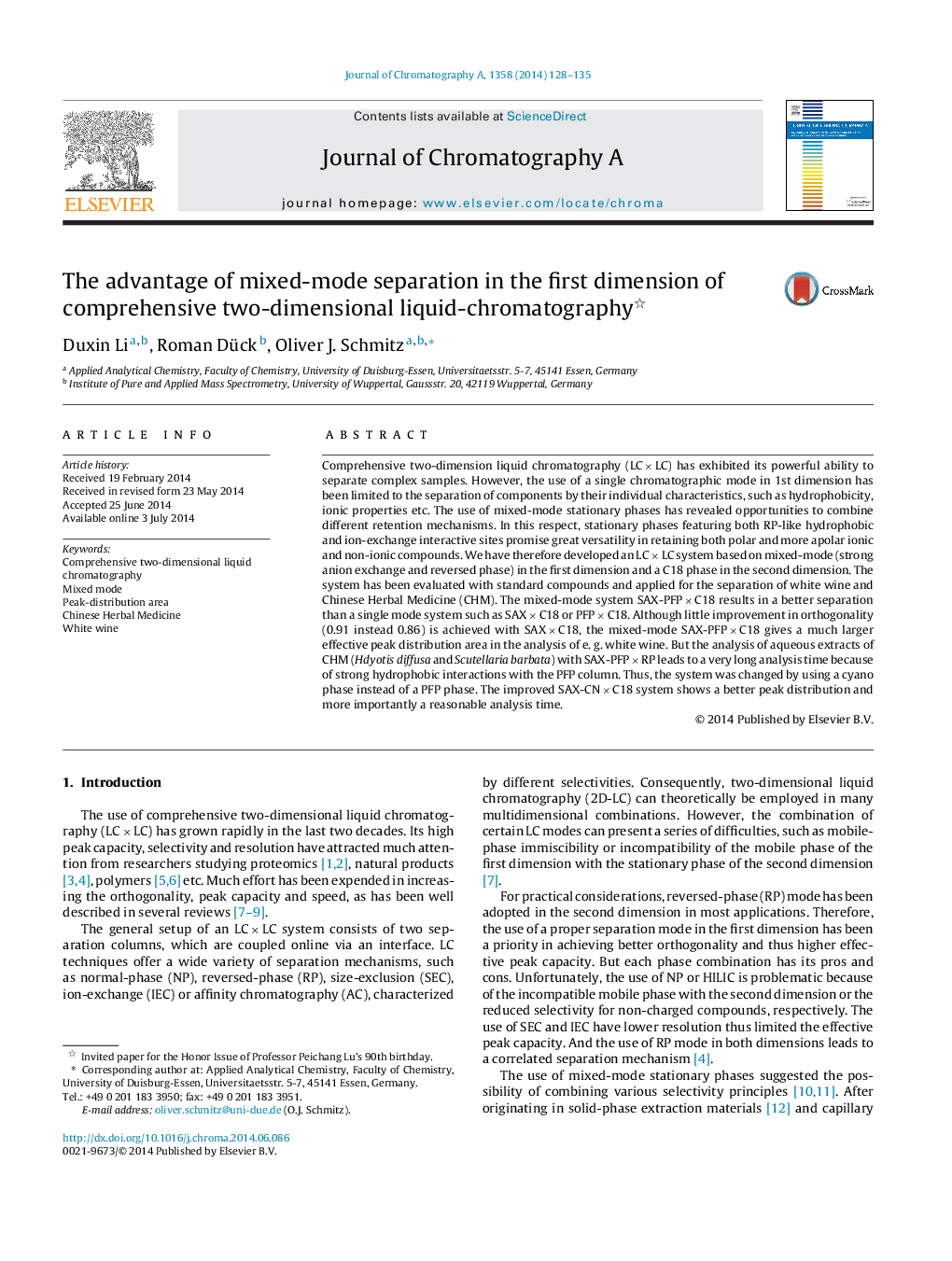| Article ID | Journal | Published Year | Pages | File Type |
|---|---|---|---|---|
| 7612710 | Journal of Chromatography A | 2014 | 8 Pages |
Abstract
Comprehensive two-dimension liquid chromatography (LCÂ ÃÂ LC) has exhibited its powerful ability to separate complex samples. However, the use of a single chromatographic mode in 1st dimension has been limited to the separation of components by their individual characteristics, such as hydrophobicity, ionic properties etc. The use of mixed-mode stationary phases has revealed opportunities to combine different retention mechanisms. In this respect, stationary phases featuring both RP-like hydrophobic and ion-exchange interactive sites promise great versatility in retaining both polar and more apolar ionic and non-ionic compounds. We have therefore developed an LCÂ ÃÂ LC system based on mixed-mode (strong anion exchange and reversed phase) in the first dimension and a C18 phase in the second dimension. The system has been evaluated with standard compounds and applied for the separation of white wine and Chinese Herbal Medicine (CHM). The mixed-mode system SAX-PFPÂ ÃÂ C18 results in a better separation than a single mode system such as SAXÂ ÃÂ C18 or PFPÂ ÃÂ C18. Although little improvement in orthogonality (0.91 instead 0.86) is achieved with SAXÂ ÃÂ C18, the mixed-mode SAX-PFPÂ ÃÂ C18 gives a much larger effective peak distribution area in the analysis of e. g. white wine. But the analysis of aqueous extracts of CHM (Hdyotis diffusa and Scutellaria barbata) with SAX-PFPÂ ÃÂ RP leads to a very long analysis time because of strong hydrophobic interactions with the PFP column. Thus, the system was changed by using a cyano phase instead of a PFP phase. The improved SAX-CNÂ ÃÂ C18 system shows a better peak distribution and more importantly a reasonable analysis time.
Keywords
Related Topics
Physical Sciences and Engineering
Chemistry
Analytical Chemistry
Authors
Duxin Li, Roman Dück, Oliver J. Schmitz,
